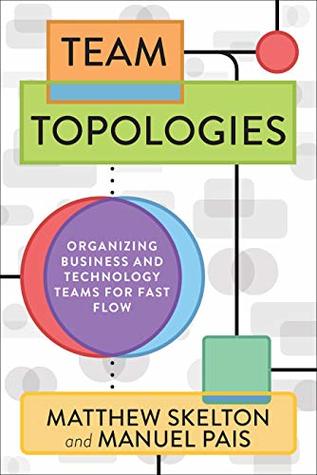More on this book
Community
Kindle Notes & Highlights
Started reading
October 23, 2021
Organizations must design teams intentionally by asking these questions: Given our skills, constraints, cultural and engineering maturity, desired software architecture, and business goals, which team topology will help us deliver results faster and safer? How can we reduce or avoid handovers between teams in the main flow of change? Where should the boundaries be in the software system in order to preserve system viability and encourage rapid flow? How can our teams align to that?
Older organizational models—with functional silos between different departments, heavy use of outsourcing, and repeated hand-offs between teams—do not provide the safety at speed or the organizational feedback mechanisms necessary for the ongoing evolution of business services needed to respond to customer and market conditions on a daily basis. As Naomi Stanford points out, “an organization has a better chance of success if it is reflectively designed.”
Several squads that work on similar areas are collected into a tribe, a sort of affinity grouping of squads. The squads within a tribe are familiar with the work of other squads and coordinate inside the tribe.
Engineers within a tribe with similar skills and competencies share practices through a chapter. So, for example, all the testers across six squads in a tribe could be part of a testers chapter.
“we must . . . ensure delivery teams are cross-functional, with all the skills necessary to design, develop, test, deploy, and operate the system on the same team.”
A key contribution of DevOps was to raise awareness of the problems lingering in how teams interacted (or not) across the delivery chain, causing delays, rework, failures, and a lack of understanding and empathy toward other teams.
There are several topologies known to be detrimental (anti-patterns) to DevOps success, as they overlook or go against core tenets of DevOps. In short, there is no “right” topology, but several “bad” topologies for any one organization.
We consider a feature team to be a cross-functional, cross-component team that can take a customer facing feature from idea all the way to production, making them available to customers and, ideally, monitoring its usage and performance.
Non-blocking dependencies often take the form of self-service capabilities (e.g., around provisioning test environments, creating deployment pipelines, monitoring, etc.) developed and maintained by other teams. These can be consumed independently by the product teams when they need them.
Product teams need autonomy to provision their own environments and resources in the cloud, creating new images and templates where necessary. The cloud team might still own the provisioning process—ensuring that the necessary controls, policies, and auditing are in place (especially in highly regulated industries)—but their focus should be in providing high-quality self-services that match both the needs of product teams and the need for adequate risk and compliance management.
The SRE approach is a highly dynamic approach to building and running large-scale software systems. The SRE team has several different interactions with application development teams at different times, depending on various factors: how many users the software application has, how reliable the software is, how available the software needs to be from a product perspective, etc.
The dynamic interaction between SRE and application-development teams is part of what makes the SRE approach work so well for Google and similar organizations: it recognizes that building and running software systems is a sociotechnical activity, not an assembly line in a factory.
Organizations at different stages of technical and cultural maturity will find different team structures to be effective.
The [DevOps] team is now evolving into a “DevOps Evangelists team” pattern, working with the client to educate and enable the individual project teams, so they make themselves obsolete along the way. They will automate the development and operations steps, implement monitoring and alerting solutions. They will then look to make development and operations own the automation and execution of it themselves.
Answering these questions becomes simpler if we reduce the number of team variations to four fundamental team topologies: Stream-aligned team Enabling team Complicated-subsystem team Platform team


